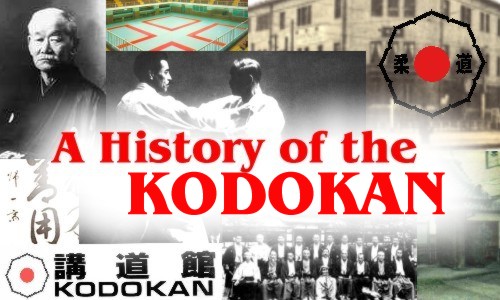












|
|

Kyuzo Mifune:
the giant of Judo
World War II was a watershed for Kodokan Judo. Kano's death before the
war, wartime demands and the Japanese surrender, and postwar occupation
and the martial arts ban all contributed to a time of uncertainty in Judo,
as in Japan. Kodokan's resurgence after the War was due primarily to two
individuals: Kyuzo Mifune and US Air Force General Curtis LeMay.
Mifune was born a year after the Kodokan was founded, April 21, 1883 in
Kuji City, Iwate Prefecture on Honshu Island. He was apparently
incorrigible as a boy, always either performing some mischief himself or
organizing others in the same pursuit. He was both bright and cocky. At
age 13, his father, a strict disciplinarian who finally gave up on the
youngest of his seven children, sent Mifune to a junior high school at
Sendai, in northern Japan. There, he discovered Judo, and decided to
dedicate himself to it. At age 14, he defeated nine opponents in a row at
one tournament with another high school.
After graduation, he was sent to Tokyo, to a preparatory school
anticipating entry into Waseda University. He immediately attempted to
join the Kodokan. In those days, this required a personal interview with
Jigoro Kano, upon the recommendation of ranking Judoka, and then signing a
blood oath. Mifune didn't know anyone at the Kodokan, but picked out
Sakujiro Yokoyama, who then had a fearsome reputation, as "Demon
Yokoyama," whose fast, powerful Judo had gained much reputation for
the Kodokan. Mifune literally camped at Yokoyama's doorstep until Yokoyama
consented to recommend him to Kano. In July, 1903, Mifune joined the
Kodokan. His father, finding out he was spending more time at Judo than
studying, cut off his allowance, and Mifune, now 22, went out to find
work. He began a newspaper, sold advertising, and built it into a thriving
enterprise. He was able to sell it at a substantial profit, and entered
the economics program at Keio University.
After 15 months, he achieved Shodan in Kodokan Judo, and after the
remarkably short time of four more months, Nidan (2nd Degree). Through
timing and speed, Mifune quickly gained a reputation, and was never
defeated at the annual Red and White Kodokan tournament. By 1912, he was a
Rokyudan (6th Degree) and an instructor. He was already being called the
"God of Judo." He was 30. His father recommended a girl in his
hometown, and, for only the second time since he had left home, he
returned to marry.
During the next 20 years, Mifune's reputation continued to grow. When
he was 40, he was challenged by a 6 foot, 240 pound sumo wrestler. Mifune,
5'2" tall and 100 pounds, finally slammed the wrestler with his
trademark 'airplane" throw (kukinage). He ate sparingly, slept
on a Western-style bed, and did not smoke. In 1937, Kano elevated Mifune
to kyduan (9th Degree).
At Kano's death in 1938, Jiro Nango became president of the Kodokan,
but Mifune became the most influential instructor. Students had long
complained that Mifune would get carried away with lectures, and he was
viewed as "feared, more than loved." May 25, 1945, he was
elevated to Judan (10th), the fourth of seven men to ever be so honored.
In 1956, he wrote his classic book, Canon of Judo, still a
remarkable exposition of Judo history, philosophy, and technical
description. To E.J. Harrison, he wrote a book forward that was simple but
expressed Mifune's philosophical nature: "Freedom in continuous
change!"(1)
Mifune's influence on post-war Judo cannot be underestimated. His skill
was perhaps the most elegant ever seen at the Kodokan. His dynamic and
fluid Judo was a natural basis for the explosive development of sport Judo
around the world. Indeed, Trevor Leggett, a frequent visitor to the
Kodokan over many years, remarked that Judo was much "rougher"
at the Kodokan prior to World War II, as opposed to afterward. This was,
perhaps, the influence of Mifune.(2)
Curtis LeMay, later director of the Strategic Air Command, and
assistant to General MacArthur during the American occupation of Japan,
made practicing at the Kodokan a routine part of Air Force tours of duty
in Japan, and many Americans brought home stories of this tiny old man,
throwing healthy young men to and fro without apparent effort. LeMay
became an enthusiastic promoter of Judo training, and provided so much
political support for the Kodokan in the early years after the war, he was
awarded the unique rank of ______________, meaning he was equal in
rank, at all times, with the highest ranking Judoka in the room. In
addition, General Thomas Powers promoted Judo in the armed forces of the
United States.
In 1964, Mifune served as an offical at the Tokyo Olympic Games, even
though he had been diagnosed with throat cancer. In December of that year,
he entered a hospital, and died there January 27, 1965, 81 years old. At
the time of his death, he was the last of the Judans of Kodokan Judo.
Back to Part 9, "History of Kodokan Judo"

|
|
|
|